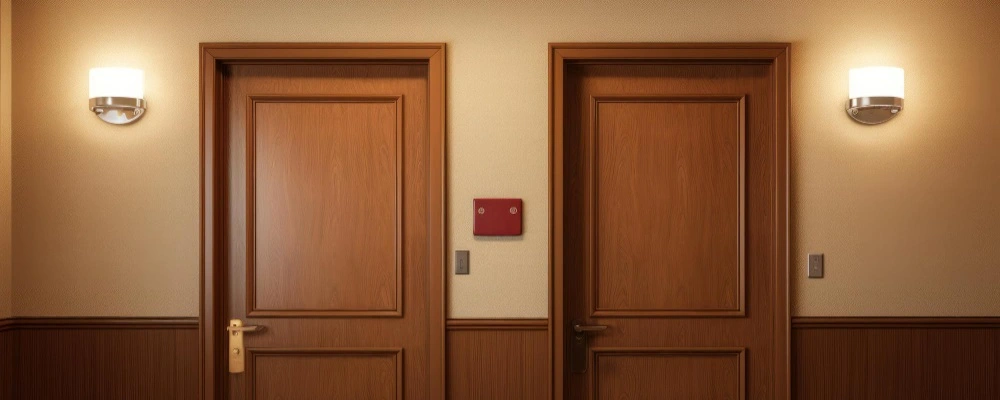Whether you are constructing a new building or rehabilitating an old one, each component of your house plays a vital role in the stability and longevity of the building. Besides standing as the essential components of a building structure, doors and windows represent vulnerable points of your residence’s external envelope. Builders must be careful while creating an opening in a building. Moreover, you must ensure to maintain structural and thermal stability. Here is where a lintel comes into play.
The importance of lintels dates back to ancient architectural practices when builders used the component for the construction of string and durable structures. Even today, the use of lintels is crucial in modern construction, as it combines functionality and aesthetics. The blog explores the use of lintels in construction, highlighting their types, materials, and the role they play in maintaining the structural integrity of buildings.
What is Lintel?
Builders consider lintels as flexural members and parts of a building’s structural system. It’s a horizontal structure spanning across the top of any opening, including doorways, windows and fireplaces. It supports the weight of the structure above it as it evenly distributes the load, preventing the walls from collapsing. These come in various materials, including stone, brick, concrete, timber and steel. The choice of material depends on several factors, including the required load-bearing capacity, the type of building and local building codes.
In ancient times, people made lintels from stones and carved intricate designs and symbols. However, today, lintels are available in various shapes and sizes, making it possible to find the perfect ones for every project. Since lintels play a crucial role in building stability, choosing the right type and size is crucial to ensure the security and safety of the structure. Besides, the lintels stand as a decorative element, enhancing the overall appearance of the building.
Types of Lintels
You can classify lintels into various categories based on the materials used in the construction. These include:
1. Wood Lintels
Wood lintels or timber lintels are the oldest types of lintels. They are used mostly in hilly areas where timber is cheap and abundant. In the plain lands, timber is expensive and susceptible to catching fire and decaying due to rot and termites. These lintels either consist of a single piece of timber or built-up sections consisting of two or more pieces held by bolts at suitable intervals. Builders and construction firms in Mysuru use built-up lintels for larger areas. You need to place the wood properly with bearings at the ends. Since these lintels are weak, builders place relieving bricks or stones over them. Even the gap between the lintel and the arch requires filling with a brick or stone core.
2. Stone Lintels
Builders use stone lintels where the stone is abundant and the structure is of stone masonry. You can use these lintels in buildings that are stone-facing. These lintels consist of stone slabs having sufficient strength. Since stone has poor tensile strength, it cannot withstand the traverse stresses. Besides, obtaining flawless stone slabs of sufficient length and depth is difficult. Moreover, the stone lintels are expensive, as they require good quarrying, transporting to the site, and special handling due to their weight.
3. Brick Lintels
Brick lintels are a good material for a lightweight structure. Usually, the builders construct these lintels over a temporary wood support known as a turning piece. The end joint of the bricks made for this purpose frequently features depressions called frogs that can aid in preventing shearing.
4. Reinforced Brick Lintels
When using brick litles over a large area, you must reinforce them with steel. Manufacturers make these lintels using the same principle as reinforced cement concrete lintels. The only difference is that you must use good-quality bricks instead of concrete. The lintel manufacturers arrange the bricks in parallel rows, leaving a lengthwise gap of a couple of centimetres to insert the reinforcements or steel bars. These builders later fill or embed the spaces with rich cement mortar or concrete. However, these lintels are not ideal in high rainfall and humidity areas. It’s because the bars receive water, eroding over a period and weakening the lintel.
5. Concrete Lintels
Today, concrete lintels are the most common type of lintels. Made from cement concrete, they are of two types—plain concrete lintel and reinforced concrete lintel. Manufacturers create plain concrete lintels with plain concrete. Since these are devoid of steel bars, they cannot bear heavy loads. Besides, concrete is stringy in compression and weak in tension. Therefore, these lintels are ideal for a span of up to one meter.
On the other hand, reinforced concrete lintels are extensively used in modern construction. Manufacturers reinforce these lintels with bottom bars and shear stirrups. The advantages of RCC have replaced all other construction materials. They offer rigidity, load-bearing capabilities, strength, fire resistance, affordability, and convenience of use.
Importance of Lintels in Construction
Load Distribution and Reduction of Stress
With lintel beams, a building experiences equal load distribution. Buildings have open spaces like windows and doorways. When the structural load above these openings exerts pressure on the lintel, it distributes the force to the adjacent walls and columns. The distribution of the load prevents the occurrence of concentrated stress points that could cause structural damage. Because of the distribution, the load helps maintain the stability of the overall structure.
Providing Structural Support
The primary role of lintels in construction is to offer structural support. Often, there are gaps in walls, doors, and windows, which weaken the wall’s load-bearing capacity. Lintel beams help reinforce and distribute the structure’s weight above the opening to the surrounding walls and columns. This ensures the building’s structural integrity and prevents potential risks, including sagging or collapsing.
Provides Design Flexibility
Besides their functional role, lintels offer design flexibility. Since one can design lintel beams in various shapes and sizes, architects and engineers can incorporate unique designs and features into the building. The ability to design lintel beams to specific aesthetic and architectural requirements enhances the structure’s visual appeal, along with offering the necessary structural support. The design flexibility offers several possibilities for creative building designs.
Things to Remember While Installing Lintel Beam

Proper installation of lintel beams is critical, as it ensures their effectiveness and longevity. Ensure to hire experienced professionals during the installation of the beams. They are proficient in calculating the load-bearing requirements and necessary structural calculations. Besides, you must take care of the lintel’s regular maintenance, including inspection for signs of cracking or damage. It ensures the overall stability of the building.
You need to consider the following things while Installing a lintel:
1. Minimum End Bearing
A lintel can provide the correct support only when it extends far into the brick masonry. It includes the sides of the doors and windows. Experts recommend extending the lintels a minimum of 150mm beyond the opening on either side.
2. Bedded on Mortar
Ensure to bed your lintel on mortar. When you install your lintel on a mortar bed, it distributes the loads equally. Look at the thickness of the mortar. It must be sufficient to accommodate any possible unevenness existing between the lintel and the support.
3. Level of the Lintel
After placing the lintel on the mortar level, ensure it’s perfectly level. If you fail to level the lintel, it will not distribute the load evenly and might create undue stress on the supporting walls.
You can use a spirit level to ensure that you placed the lintel perfectly horizontally across the opening. Confirm that the lintel is level crosswise. Simply speaking, you must ensure that neither leaf is higher than the other. If the opposite happens, it will create undue pressure on one of them.
4. Allow Curing of Mortar before Applying Loads
After levelling your lintel, allow the mortar to cure before applying any loads. If you fail to cure the mortar, the lintel will fail to transfer any type of load on the side of the openings. If you are in a hurry and cannot wait for the mortar to cure, ensure to place appropriate supports beneath the lintel before the application of loads.
5. Supporting the Sides with Bricks
Once the mortar dries up or you have support, you start laying the bricks. Ensure that you lay the bricks simultaneously on both sides. This ensures that the load on each leaf does not get too far out of balance. Applying too much load on one side at once might damage the lintel.
6. Install a Damp Proof Course
If you are installing the lintel as a part of the cavity wall, it is crucial to install a damp-proof course. Builders design cavity walls so that the outer leaf remains damp while the inner leaf remains dry. Therefore, when installing a lintel, you must ensure the moisture doesn’t trap between the two.
Conclusion
Lintel beams are the backbone of every construction. Because they provide structural support, even distribution of loads, and design flexibility, their function in supporting doors and windows maintains the structural integrity of the building while preventing any potential collapse or damage.As a leading construction firm in India, Brick & Bolt understands the effort that goes into building your home. The organization has an in-house material supply chain that streamlines material supply. Besides, they ensure a continuous flow of the best quality materials that support the success of your construction project, right from sourcing to delivery.

